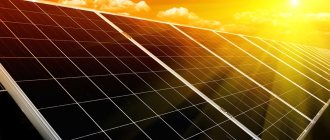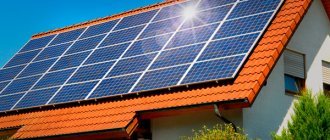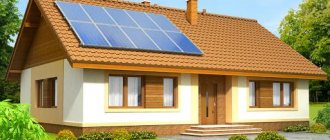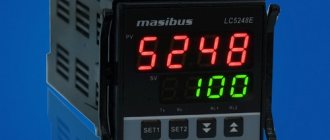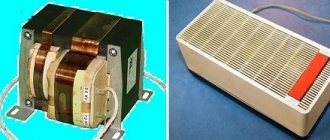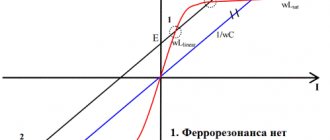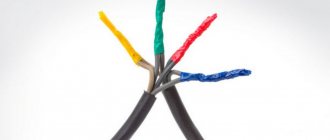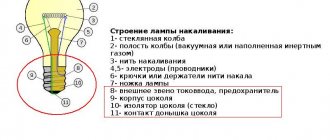- home
- Green electrics
Solar power plants are not yet widely used, for a number of reasons described in this article (opens in a new window). Thin-film solar cells, among the latest technologies, have not yet become fashionable and are not used everywhere, because... have more disadvantages than advantages, but let's consider both sides.
Review
Today, thin-film solar batteries, in addition to the classic installation on roofs, can be used instead of glazing. Such modules are distinguished by a variety of colors, which allows buildings to give a unique appearance.
Energy generated by thin-film batteries can be used for domestic needs.
The tempered glass covering the photocells has greater mechanical strength than regular glass and is safer. Therefore, the upper floors of houses in many countries, as well as loggias and balconies, are glazed with it.
In addition, it provides fairly good transparency, guaranteeing high efficiency even in diffuse light, i.e. They not only look aesthetically pleasing, but also save money.
For an opaque battery you will have to pay about 9 thousand rubles, for a partially transparent colored battery (20%) - 16 thousand.
But these days, thin-film solar cells are not as widespread as their crystalline brothers. The reasons lie in their large dimensions and low efficiency.
Nevertheless, experts believe that the future of solar energy lies with them.
They cite the following advantages of thin-film batteries:
- low cost;
- slight difference in efficiency;
- constant increase in the cost of crystalline analogues.
In addition, thin film technology is considered the most reliable. Already today, several types of thin-film batteries, also called “flexible”, have been developed, for the creation of which they use:
- amorphous silicon;
- cadmium telluride/sulfide;
- copper-indium and copper-helium diselenide.
Application area
As practice shows, it is advisable to use flexible solar panels only in camping conditions. It is much easier to unroll a canvas with film solar panels on the roof of a tent or trailer than to carry around a rigid structure that takes time to assemble. Portable power stations are also popular for charging phones and flashlights while traveling.
Due to low efficiency, the scope of application of solar panels is very limited. Application as a stationary solar power plant is possible, but only if there is large free space.
Video about film batteries
A typical advertising story, where the announcer tells wonders about film solar batteries, assuming an efficiency of 10%, forgetting that such results have so far been achieved only in laboratory conditions, but not in industrial samples. The video will be of interest to those who want to know how advertising tries to deceive us.
Main advantages
This type of thin-film solar panels has many differences from their crystalline counterparts:
- small thickness not exceeding 1 micron;
- excellent flexibility, allowing the panel to be mounted on all kinds of curved surfaces, including cylindrical ones;
- preservation of parameters in diffused light, which will increase the total power generation, in comparison with poly- and monocrystalline panels, by 10, and in some cases by 15 percent;
- low cost of the production process, therefore, low cost of the finished product;
- highly efficient operation in power systems with a power of more than 10 kW and in high temperature conditions;
- significant indicators of optical absorption of the solar spectrum, exceeding the crystalline spectrum by more than 20 times;
- stability of output power for a long time - reliability;
- environmentally friendly, since they have a low proportion of silicon used - 1/000 of that used in crystalline analogues;
- short payback period due to high energy output;
- light weight for easy installation;
- impact resistance. During installation, falls are common, but the film remains operational.
From flat to cylindrical
Cylindrical solar panels were first developed by a small American company with the catchy name Solyndra (from the words “solar” and “cylinder”). They presented their achievement in 2008 and immediately received several large orders from European and American companies. According to them, this figure was more than $1 billion.
Until 2008, solar cells were flat in shape. Solyndra proposed installing cylinder elements in solar panels. A thin layer of photocell is applied to the surface of a glass tube, after which it is placed in another similar tube, but with electrical contacts. The already familiar copper, gallium, selenium and indium are used as semiconductors for elements. Cylindrical solar panels, due to their shape, absorb more light and, as a result, have a higher performance indicator. Each panel consists of 40 cylinders and measures 1 by 2 meters.
To increase the absorbed light, it is recommended to use cylindrical batteries in combination with a white roof covering. In this case, the rays reflected from the roof will pass through the cylinders, which will provide another plus 20% of the absorbed energy. Another important advantage of batteries with cylindrical elements is their resistance to strong winds. They are able to withstand wind gusts of up to 200 km/h. This makes installation of solar panels easier and cheaper.
Device
Triplexes made of tempered glass, in which thin-film solar panels are placed, are reliable protection for the latter. The photographic film is placed under high-strength glass, which is highly transparent and at the same time transparent. The same solution is used in the automotive industry, the production of LED triplexes, and architecture, where it has proven itself to be the best.
We recommend:
- Solar panels work at night and in cloudy weather
- Monocrystalline solar panels: comparison with analogues, advantages, price - TOP-6
- Goal Zero Nomad 14 Plus: solar panel review, appearance, device, advantages and price
Comments:
Megavolt
I read that they released solar batteries in the shape of a round cone, they produce 20% more than conventional batteries. Does anyone know about this technology?
Electrician
Megavolt, let's calculate))) The efficiency of film batteries (namely, they are rolled into a cone) = 10%. We add 20% of 10% to them and get as much as 12% with an increase in cost of at least three times! Breakthrough in savings!
Semyon
Electrician, I also watched this story. It immediately seemed suspicious to me that the entire scientific breakthrough consisted of giving batteries some kind of shape. As if no one had guessed before that the sun was out of place... As always - conspiracy theories and collusion.
Leave a comment Cancel reply
Related Posts
How to choose a solar panel - overview of important parameters
Selecting a battery for a solar power plant
Windmill for a private home - a toy or a real alternative
Fuel-free generator - a way to make money on illiteracy
About technology
To make a thin-film solar structure, semiconductor compounds are sputtered onto a flexible substrate (usually a polymer).
At first, they used exclusively amorphous silicon for this. But, I was not satisfied with the low efficiency of photocells - about 4-5%.
After the advent of selenide and telluride - innovative materials, it was possible to achieve a higher efficiency rate - up to 12%.
Vacuum method
The method involves the use of vacuum chambers or electron guns for deposition of diselends from vapor.
In principle, any approach can be used, for example, ion sputtering, but all methods have their own difficulties, such as the formation of a film both on the substrate and on the inner surface of the chamber. Another difficulty is associated with the supply of indium, which is actively used for the manufacture of flat panel monitors.
For such devices, the efficiency can exceed 20%.
Although panels of this type are actively developing, their demand is small and does not exceed 2%.
Films made using cadmium telluride have gained great popularity. Their efficiency is 16% (versus 18%). Amorphous silicon batteries are very popular. Their efficiency was increased to 10%.
Which solar panel to choose?
The choice of solar panels for country houses at a latitude of 45-60 ° is not difficult. There are only two options worth considering here: polycrystalline and monocrystalline silicon panels. If there is a shortage of space, it is better to give preference to more efficient models with one-sided crystal orientation; if there is an unlimited area, it is recommended to purchase polycrystalline batteries.
You should not rely on the forecasts of analytical companies for the development of the solar panel market, because the best examples of them may not have been invented yet
It is better to choose a specific manufacturer, the required power and additional equipment with the participation of managers of companies involved in the sale and installation of such equipment. You should know that the quality and price of photovoltaic modules from the largest manufacturers differ little.
It should be taken into account that when ordering a set of turnkey equipment, the cost of the solar panels themselves will be only 30-40% of the total amount. The payback period for such projects is 5-10 years, and depends on the level of energy consumption and the possibility of selling excess electricity to the city grid.
Suspension method
In the production of thin-film solar cells, leading specialists use several methods for applying diselenides. The most common is the use of suspended metal oxides.
By changing the concentration and viscosity of the suspension, so-called “ink” is obtained, which is adjusted for a specific technology (from screen printing to jet deposition).
Various materials can also serve as a substrate - metallized foil, glass, even plastic. The efficiency of using the material is very high - 90%, and production is many times cheaper than vacuuming.
The advantage of the method is a uniform and homogeneous spray layer, but the disadvantage is low, compared to vacuum, efficiency - 16% (versus 18%).
